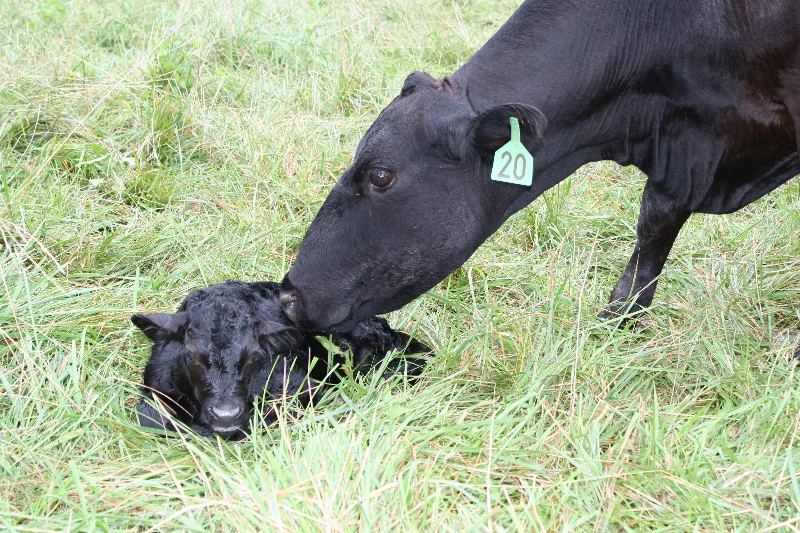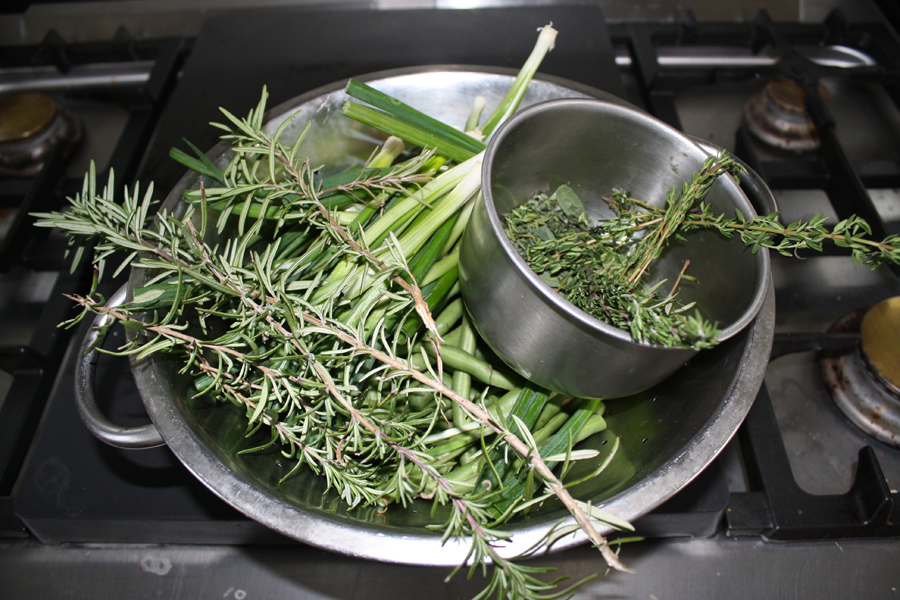Products
Grass fed beef
Our Angus cows are humanely raised and feed only on grass and kelp and free choice organic minerals. We practice “ultra high density grazing,” also known as mob grazing – like the herds of buffalo, that in the past grazed and then quickly moved on. Eating a small percentage of forage, and trampling most of the forage and manure, the buffalo herds enriched the soil and grasses that remained behind. To emulate that “herd effect,” we move our cows twice a day to fresh pasture – making our cows and our soil healthier each day.
Eggs
Our hens spend most of the year in “chicken tractors ” - bottomless pens that are moved once a day to fresh pasture, where they can hunt and peck for fresh insects and grass and worms. Even small snakes should beware as chickens are eager carnivores. Our hens eat a non GMO corn / soy feed mixed with Fertrell’s natural
vitamin mineral supplement. The chickens on pasture also have a role to play - fertilizing the fields and eating the parasites in the cow patties. They are not free range because there are red tail hawks, bald eagles, foxes and raccoons who would enjoy a chicken dinner. In the winter, when the weather freezes the water pipes, we move
the chickens up near the house to a straw bale house with a sunny southern exposure, translucent roof and a large outdoor pen.
Berkshire Pigs
Berkshire pigs are a heritage breed of pig considered amongst the best tasting. They feed on Fertrell’s “natural” formula in a barley and wheat mix of feed ground fresh at an Amish feed mill. Our Berkshires grow slower on their barley/wheat feed, but it helps make their fat distinctively tastier, tastier, compared to non GMO corn/soy feed we sometimes use. Portable electric fences allow us to rotate them through the oak and poplar woods to root for grubs, acorns, whatever strikes their fancy, making them particularly delicious. Our Berkshires are harvested after the acorn season to enhance their taste.
Heirloom Tomatoes
Heirloom tomatoes come in a variety of sizes and shapes. They may not look pretty but are incomparably delicious. All are grown without chemical herbicides, pesticides and fertilizers.
Berkshire Pork Salami
Although we love the Boston Butt cut that comes from the pig shoulder for slow cooked BBQ, after we met the folks at Meatcrafters, fine local charcuterie pros who specialize in curing salami, we thought we should try using some of our Berkshire shoulders to make salami. The result is another delicious taste treat courtesy of the Longview Farm Berkshire Pigs.
Ossabaw Pigs
Ossabaw pigs are an heritage breed of pig descended from pigs the Spaniards dropped off on the Georgia sea islands back in the 1600’s as a future food source when they returned to the area in their ships. The descendants of those pigs are today known as Ossabaws. George Washington, who appreciated good food, raised them at Mt Vernon. They are an even slower growing heritage breed than the Berkshires. The Spaniards know their pigs and the Iberian breeds are particularly delicious. Jamon iberico, the ham from the black iberian pig that is finished on acorns and cured for two years, is prized amongst hams. Our Ossabaws are rotated through the woods under oak, beech, hickory and poplar trees, free to roam around and
feast on acorns, nuts and whatever their noses find. They are fed a barley and wheat feed, ground fresh at the Amish feed mill. Slower to mature and eating a barley/wheat feed, our Ossabaws will take two years to finish and then two more years to hang the hams. With time, patience, hard work on our part, wholesome feed, plentiful acorns, ample woodlands and a good charcuterie, we are hoping to make delicious cured hams. We have the commitment and the goal, but we are looking for a charcutier to cure and hang our hams. The search is on...
Flowers
Zinnias are available in the summer and early fall and forsythia and iris in the spring.
Salad Greens
Mouth watering mixed salad greens are grown in the cooler months and a variety of herbs in the summer...







